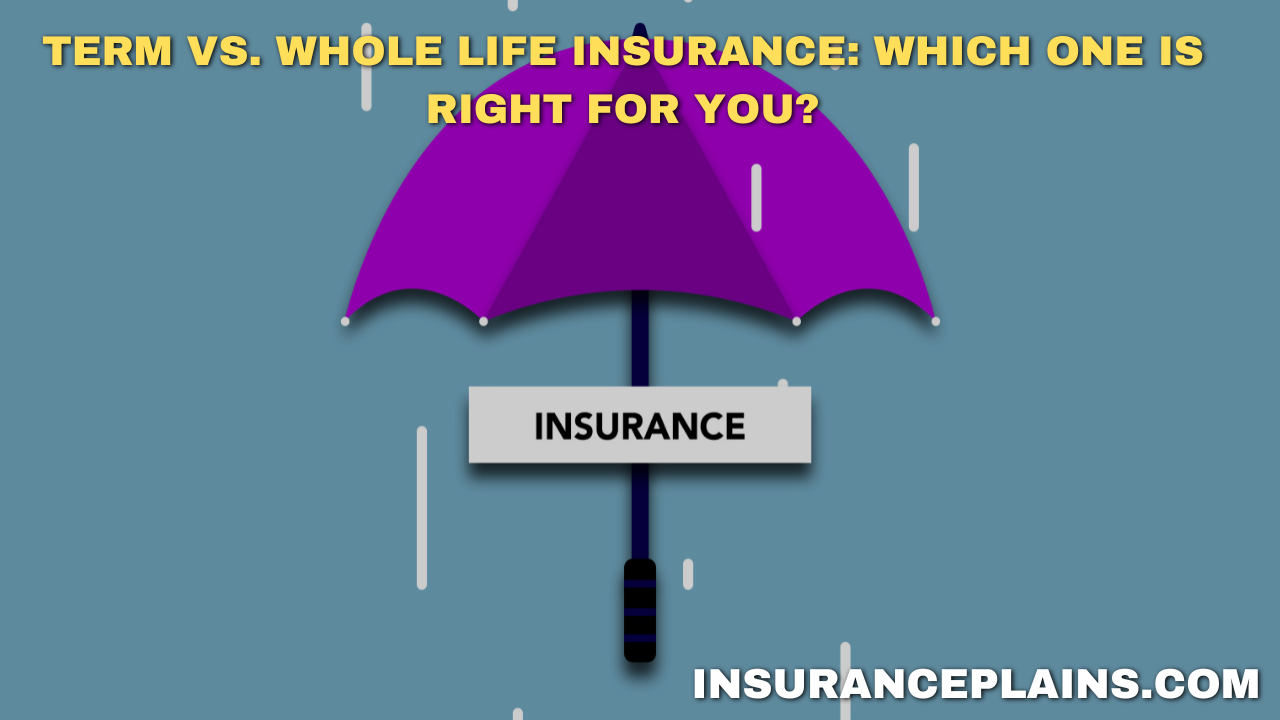Choosing the right life insurance policy is a crucial financial decision that can impact your family’s security for years to come. Two of the most common types of life insurance are term life insurance and whole life insurance. Each has its own benefits and drawbacks, depending on your financial goals, budget, and coverage needs.
In this article, we’ll compare term and whole life insurance to help you decide which one is the best fit for you.

1. What is Term Life Insurance?
Term life insurance provides coverage for a specific period (the “term”), typically 10, 20, or 30 years. If you pass away during the term, your beneficiaries receive a death benefit. If you outlive the policy, coverage ends unless you renew or convert it (often at a higher cost).
Pros of Term Life Insurance:
✅ Affordable premiums – Generally much cheaper than whole life insurance.
✅ Simple and straightforward – Pure death benefit with no investment component.
✅ Flexible terms – You can choose a term that matches your financial obligations (e.g., until your mortgage is paid off or your kids are grown).
Cons of Term Life Insurance:
❌ No cash value – Unlike whole life, it doesn’t build savings or investments.
❌ Temporary coverage – Once the term ends, you may need to requalify, often at a higher rate.
Best for: People who need temporary, high-coverage protection at a low cost (e.g., young families, homeowners with a mortgage).
2. What is Whole Life Insurance?
Whole life insurance provides lifetime coverage as long as premiums are paid. It also includes a cash value component that grows over time, which you can borrow against or withdraw.
Pros of Whole Life Insurance:
✅ Lifelong coverage – No expiration as long as premiums are paid.
✅ Cash value growth – Part of your premium builds savings, which can be used later.
✅ Fixed premiums – Rates stay the same for life, unlike term policies that increase upon renewal.
Cons of Whole Life Insurance:
❌ Expensive premiums – Can cost 5-10x more than term life for the same death benefit.
❌ Complex structure – Includes fees and may have lower investment returns compared to other options (e.g., mutual funds).
Best for: Those who want permanent coverage and can afford higher premiums (e.g., high-net-worth individuals, estate planners).
3. Key Differences Between Term and Whole Life Insurance
| Feature | Term Life Insurance | Whole Life Insurance |
|---|---|---|
| Duration | Temporary (10-30 yrs) | Lifetime |
| Premiums | Low, but can increase upon renewal | High but fixed |
| Cash Value | No | Yes (grows over time) |
| Flexibility | Simple, no investment component | Complex, includes savings/investment |
| Best For | Short-term needs (e.g., family protection, debt coverage) | Long-term wealth transfer, estate planning |
4. Which One Should You Choose?
Choose Term Life If You:
✔ Need affordable coverage for a set period (e.g., until retirement or kids are independent).
✔ Prefer lower premiums and don’t need an investment component.
✔ Want flexibility to invest the premium difference elsewhere (e.g., stocks, retirement accounts).
Choose Whole Life If You:
✔ Want lifelong coverage and are willing to pay higher premiums.
✔ Need a cash value component for loans or supplemental retirement income.
✔ Are looking for estate planning or wealth transfer benefits.
5. Final Thoughts
There’s no one-size-fits-all answer—term life is best for most people due to its affordability, while whole life suits those with long-term financial planning needs.
Consider:
🔹 Your budget – Can you afford whole life premiums, or would term life free up cash for other investments?
🔹 Your goals – Do you need temporary or permanent coverage?
🔹 Alternatives – Could you buy term and invest the difference for better returns?
If you’re unsure, consulting a financial advisor can help tailor a plan to your needs.
Bottom Line:
- Term life = Cost-effective, temporary protection.
- Whole life = Lifetime coverage + cash value, but expensive.
Which one fits your financial strategy? Let us know in the comments!









